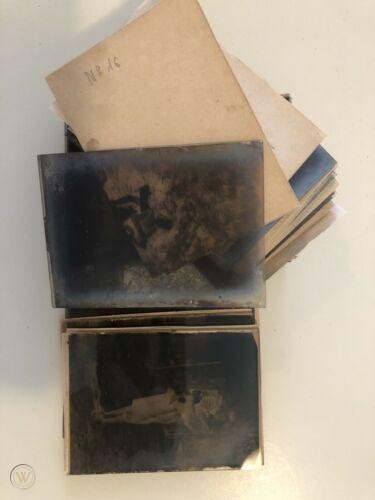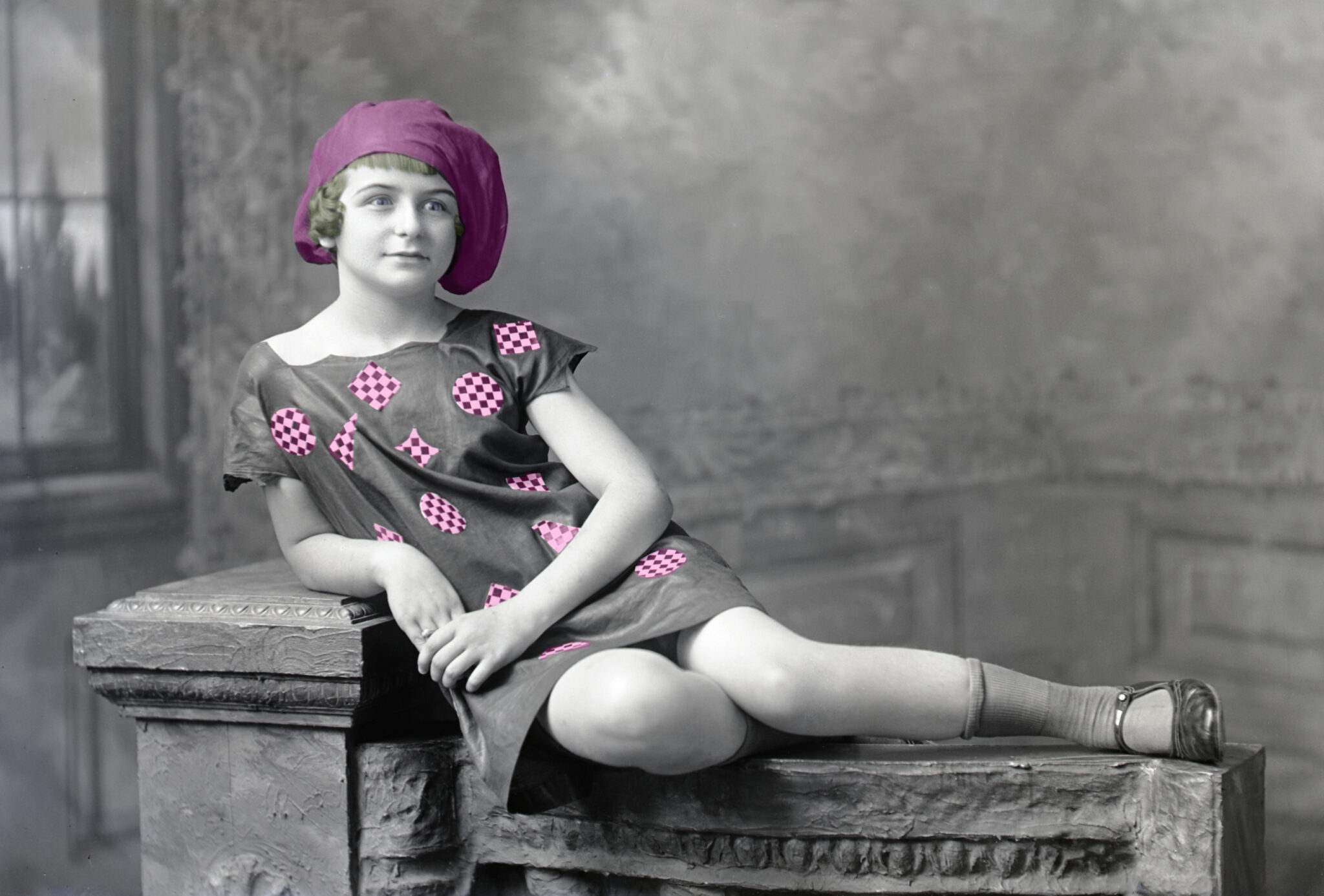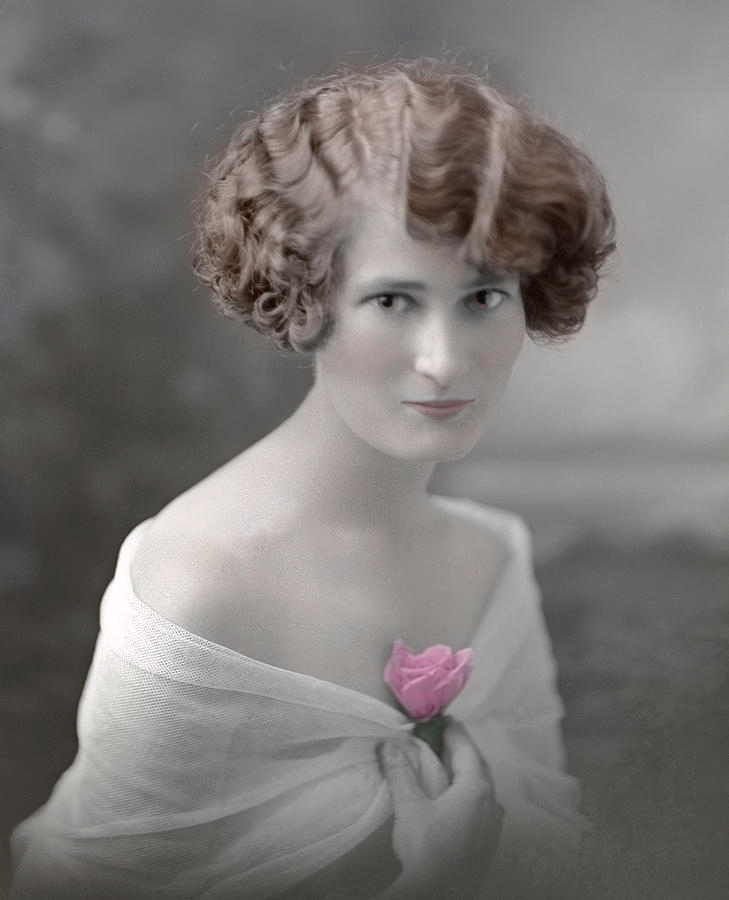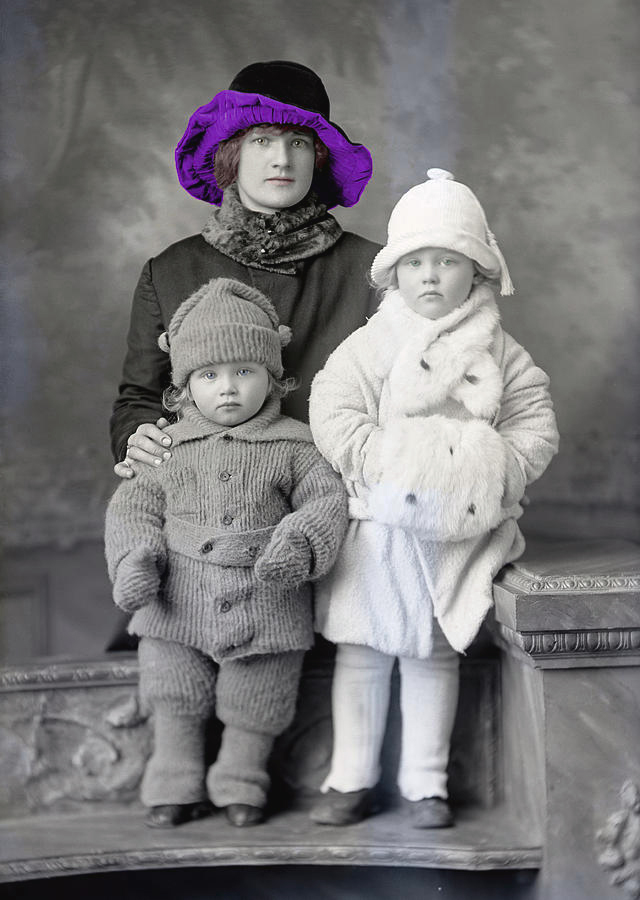
I am obsessed with collecting antique photographic glass plate negatives. These magical relics are mysterious windows into the past that have fascinated me for years.
Glass plate negatives represent at least half of my antique and vintage photograph collection, numbering more than a thousand. So, why collect glass plate negatives? It’s not like you can exhibit this type of collection by displaying stacks of these smokey gray glass squares in a China cabinet or on a coffee table. They aren’t pretty to look at like a Limoges plate display.
For me, the thrill of collecting glass plate negatives is the anticipation and surprise when the negative is scanned and processed into a positive image. And a great bonus to owning your own glass plate negative collection is the profit you can make from your investment.
Over the years, I purchased many negatives blind. That means I would buy a glass negative collection with no earthly idea of the quality or type of images I was getting. Risky? Maybe. But for me, the opportunity outweighed the risk. It’s the 2% rule. Never risk more than you are willing to lose.
Photographic glass plate negatives are for sale on most online selling platforms. Some sellers will list glass negatives for purchase and display the positive image. Having a positive image helps a buyer determine the quality of the negative and the subject matter. The quality (clarity and exposure of the image) and the subject matter can dramatically increase competition between buyers. However, most sellers do not take the time to reveal the positive image of the negative. This is where a savvy buyer can capitalize on his investment.

Photo: Theresa Franks
COLLECTING PHOTOGRAPHIC GLASS PLATE NEGATIVES
The Photographic Process
There are two primary photographic glass plate negative processes: collodion wet plate and gelatin dry plate. Each type of glass plate negative requires different conservation methods. The gelatin dry plate method is the most stable. If you decide to start collecting these gems, I suggest thoroughly researching the subject. Doing so will help you readily identify the negative process used and how to protect your investment. A wealth of information on photographic glass plate negatives is available at Online Computer Library Center or OCLC.
How to Start Collecting
The genre of glass plate negatives is immense. There are generally two types of negatives—vernacular negatives and fine art negatives. I have purchased spectacular vernacular glass negatives that fall into the fine art category because of the sheer skill of the photographer.
Collecting categories for glass plate negatives that you may want to consider are:
- Portraits
- Animals
- Landscapes
- Store Fronts
- Cityscapes and Street Scenes
- Militaria
- Landmarks
- Famous Personalities
- Occupational
- Post-mortem
- World Events
- Trains
- Automobiles
My favorite collecting genres are unique and poignant portraits of women and children.

Photo: Theresa Franks
So, begin by buying what moves you. It is what I love about vintage and antique photography. The image or the subject matter is usually the thing that captures you and leads you to buy. It is an easy decision when the seller has included a positive image of the negative in the sale listing where you can clearly see the image you intend to purchase.
Be aware, however, that in most sale listings, you will find that there is not a positive image to help you decide on quality or condition. It can be a huge opportunity, or it can be a disappointment. There have been times when I have purchased an entire collection only to have one or two images be of the quality that I would consider reproducing. But those one or two images were killer, making my investment pay in spades.
Glass plate negatives are rarely signed in the negative by the photographer who produced them. But if they are, it can indicate that the negative may be more valuable. For example, glass plate negatives produced by the famous photographer Mathew B. Brady would generate intense competition from buyers. In most cases, however, the photographer is not identified. Sometimes you will get lucky and purchase a negative where the subject’s name is referenced on the glass plate—a pleasant surprise.
How to Profit from Your Glass Plate Negative Collection
Investing in and scaling your collection to make a profit is where collecting glass negatives gets exciting. To display your collection of prized photographic glass negatives, you will have to convert the negative into a positive image and digitize it. The best way to do this is by using a scanner that will do an excellent job for you.
I use an Epson Perfection V850 Pro Photo scanner. It is on the top end, but it is well worth the money to yield quality high-resolution photographs. Whatever scanner you choose, be sure the unit will scan negatives.
Once I have scanned the negative, it is saved and opened in a photo editing software to repair scratches, damage, or other anomalies. I am sure 19th-century photographers would have loved to have today’s technology to improve and restore their images.
When the editing of the photograph is complete, I decide if I will print it as is or enhance the image with color or add other interesting artistic elements. It doesn’t take long before a 4 x 6 glass negative is transformed into a beautiful and saleable framed artwork. Using a quality reproduction printing service, I can produce multiple prints in different sizes, maximizing profit. The option to sell digital images or downloads of your scanned glass negatives is also a significant revenue opportunity.

Photo: Theresa Franks
The beauty of scanning and reproducing prints of glass negatives is the ability to grow your investment by generating revenue from the very best of your collection. In addition, the marketing potential is significant. Collectors, interior designers, restaurants, and bars are just some of your potential customers. I have decorated historic homes and my own home and business using the negatives I have collected.
When reproducing photographic glass plate images for sale, ensure that the glass plates are in the public domain. Usually, as a rule, any work created or published before 1923 is in the public domain. In all cases, due diligence in this regard is essential. Concerning more famous photographers, one should always investigate copyrights. Consult this helpful tool to help you research public domain and general copyright law.
Photographic glass plate negatives are a gift from the distant past that keeps on giving. For decades ghostly frozen figures sat stacked in dusty boxes or an old antique cabinet waiting for discovery. Today’s software and technology make it possible to easily bring these old images to life that may have never been realized or appreciated otherwise.
Theresa Franks resides in historic Prescott, Arizona. She brings a lifetime of experience to collecting, restoring, and writing about antique and vintage items.
WorthPoint—Discover. Value. Preserve.
The post Windows into the Past: Collecting and Profiting from Photographic Glass Plate Negatives appeared first on WorthPoint.
